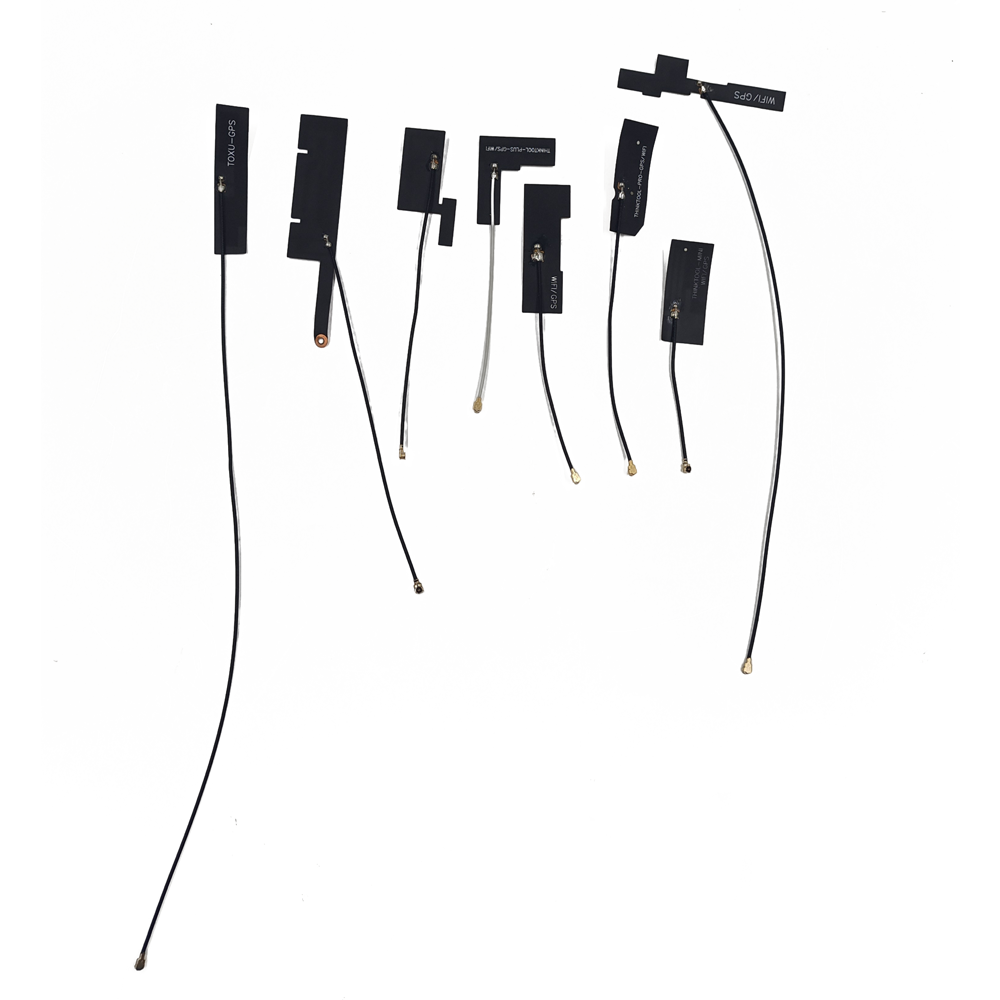Consumer Electronics
Internal GNSS antennas are ubiquitous in consumer electronics, including smartphones, tablets, smartwatches, and portable navigation devices. In smartphones, they enable location - based services such as mapping, ride - hailing, and geotagging. Smartwatches use internal antennas for fitness tracking (e.g., distance traveled during a run) and emergency location sharing. Tablets rely on them for navigation apps and location - aware content, such as local news or weather. The compact size and integration of internal antennas are critical in these devices, where user demand for sleek designs and portability is high.
Wearable Devices
Wearable devices, such as fitness trackers, smart bands, and GPS - enabled watches, depend on internal GNSS antennas to provide location data without adding bulk. These devices are designed to be lightweight and comfortable, making internal antennas the only practical option. For example, a fitness tracker with an internal antenna can accurately track a user's running route or hiking path, while remaining small enough to wear on the wrist. Internal antennas in wearables are often optimized for low power consumption, extending battery life—a key feature for devices used throughout the day.
Internet of Things (IoT) and Asset Tracking
IoT devices, such as smart sensors, asset trackers, and connected appliances, use internal GNSS antennas for location - based monitoring and management. Asset trackers, for instance, are attached to packages, vehicles, or equipment to track their movements in real - time. These trackers are small and discreet, requiring internal antennas to avoid drawing attention or adding size. Internal antennas in IoT devices are also designed to operate in low - power modes, ensuring long battery life for devices deployed in remote or hard - to - reach locations.
Automotive Infotainment and Telematics
Modern vehicles increasingly integrate internal GNSS antennas into their infotainment systems and telematics units. These antennas provide navigation data for in - car maps and enable telematics features such as vehicle tracking, stolen vehicle recovery, and remote diagnostics. In automotive applications, internal antennas are often embedded in the dashboard, roof liner, or rear window, avoiding the need for external mounts that can affect aerodynamics or aesthetics. They are designed to withstand the harsh automotive environment, including temperature extremes, vibration, and electromagnetic interference from other vehicle systems.
Drones and Unmanned Aerial Vehicles (UAVs)
Small drones and UAVs use internal GNSS antennas for navigation, waypoint tracking, and stable flight. These antennas are integrated into the drone's body, reducing wind resistance and improving aerodynamics. In consumer drones, internal antennas enable features such as return - to - home functionality and precise hover control. Their compact size is essential for maintaining the drone's lightweight design, which affects flight time and maneuverability.
Design Considerations for Internal GNSS Antennas
Placement Within the Device
The placement of the internal GNSS antenna is critical for performance. Antennas are typically positioned as close to the top of the device as possible (to maximize sky visibility) and away from large metal components (such as batteries or speakers) that can block signals. In smartphones, for example, the antenna is often placed near the top edge, under a plastic or glass portion of the housing. In wearables, it may be positioned on the side of the device, away from the user's body (which can absorb RF signals).
Material Selection for Housing and Substrates
The choice of materials for the device's housing and the antenna's substrate directly impacts performance. Housing materials should be non - metallic (e.g., plastic, glass, or carbon fiber) in the area covering the antenna to minimize signal attenuation. Metallic housings may require a "window" of non - metallic material to allow signals to pass through. For the antenna's substrate, materials with stable dielectric properties (such as ceramic or high - performance plastics) are preferred, as they ensure consistent performance across temperature and humidity ranges.
Integration with Other Antennas
Many modern devices include multiple antennas (e.g., for cellular, Wi - Fi, Bluetooth, and GNSS). These antennas can interfere with each other if not properly isolated. Designers must ensure that the internal GNSS antenna is placed far enough from other antennas to minimize cross - talk and electromagnetic interference. This may involve using shielding materials or arranging the antennas in a way that their radiation patterns do not overlap.
Testing and Optimization
Internal GNSS antennas require rigorous testing to ensure performance in real - world conditions. This includes testing in anechoic chambers to measure gain, radiation patterns, and impedance matching, as well as field testing in various environments (open sky, urban canyons, indoors) to evaluate positioning accuracy and signal acquisition time. Designers use simulation tools to model the antenna's performance within the device, optimizing factors such as ground plane size, radiating element shape, and matching network components to overcome the challenges of the internal environment.
Future Trends and Developments
Improved Signal Processing Algorithms
Advancements in GNSS receiver algorithms will complement internal antennas by better mitigating multipath interference and noise. Machine learning and artificial intelligence (AI) techniques are being developed to identify and filter out interference caused by the device's internal components, improving positioning accuracy in challenging environments. These algorithms can adapt to the device's orientation and environment, optimizing performance in real - time.
Multi - Band and Multi - Constellation Support
Future internal GNSS antennas will increasingly support multiple frequency bands (e.g., GPS L1, L5; Galileo E1, E5) and satellite constellations (GPS, GLONASS, Galileo, BeiDou). This multi - band, multi - constellation capability will improve accuracy and reliability by providing more satellite signals to process, reducing the impact of signal blockages and interference. For example, using both L1 and L5 bands allows for better correction of ionospheric errors, enhancing positioning accuracy in urban areas.
Miniaturization and Flexible Materials
As devices continue to shrink, internal GNSS antennas will become even more compact, thanks to advancements in materials and manufacturing. Nanotechnology and metamaterials are being explored to create smaller antennas with higher gain. Flexible and stretchable materials will enable antennas to be integrated into curved or deformable devices, such as foldable smartphones, smart clothing, and flexible IoT sensors, without sacrificing performance.
Integration with 5G and Advanced Wireless Technologies
The integration of internal GNSS antennas with 5G and other wireless technologies (e.g., Wi - Fi 6E) will enable new location - based services. 5G's low latency and high bandwidth will allow for real - time processing of GNSS data, enhancing applications such as autonomous navigation and augmented reality (AR). Internal antennas may also be designed to share frequency bands or hardware with other wireless components, reducing size and cost while improving coexistence.
Energy Harvesting and Low - Power Design
To extend the battery life of wearable and IoT devices, future internal GNSS antennas may incorporate energy harvesting technologies. These antennas could capture ambient RF energy (from cellular or Wi - Fi signals) to power the LNA or other components, reducing reliance on the device's battery. Additionally, advances in low - power design will minimize the energy consumption of the antenna and associated circuitry, making internal antennas even more suitable for battery - powered devices.




































































 Language
Language
 En
En Cn
Cn Korean
Korean

 Home >
Home > 







 18665803017 (Macro)
18665803017 (Macro)













